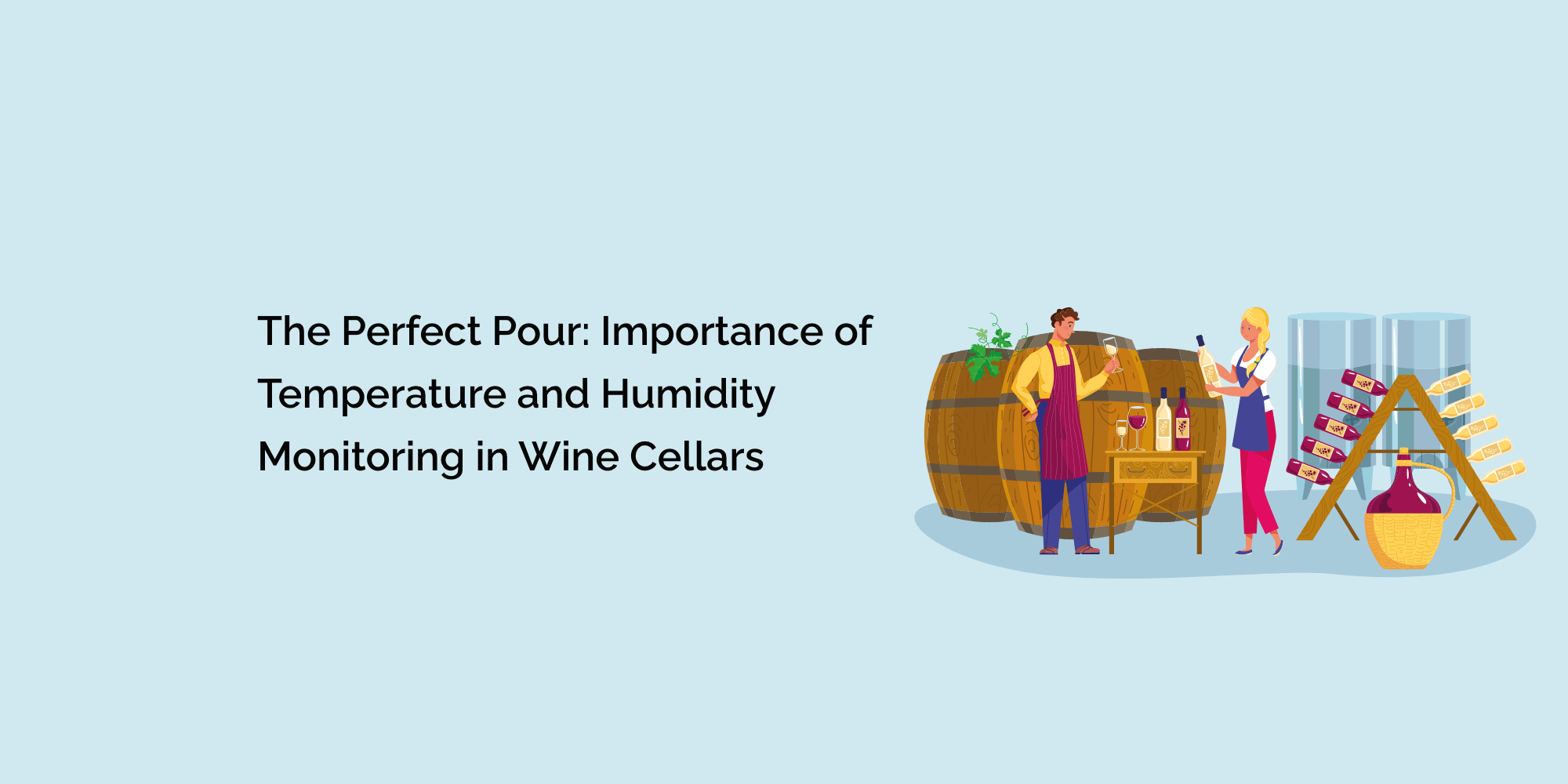Wine has been a symbol of luxury and refinement for centuries, and for wine enthusiasts and collectors, storing wine properly is of utmost importance. Wine cellars provide an ideal environment for aging and preserving wines, allowing them to develop complex flavors and aromas over time. However, maintaining the perfect conditions in a wine cellar requires precise temperature and humidity control. In this comprehensive blog, we will explore the significance of temperature and humidity monitoring in wine cellars, the impact of these factors on wine quality, and the best practices to ensure the perfect pour for your cherished wines.
The Role of Temperature in Wine Cellars:
Temperature is a critical factor in wine cellars for several reasons:
-
Wine Aging and Development: The aging process in wine cellars is a delicate balance between chemical reactions that occur over time. Proper temperature conditions are essential for wines to age gracefully and develop complex flavors.
-
Consistency in Aging: Maintaining a consistent temperature throughout the wine cellar ensures that all bottles age uniformly and avoid temperature-related inconsistencies.
-
Prevention of Spoilage: High temperatures can lead to wine spoilage, causing off-flavors and aromas that diminish the wine's quality.
-
Avoiding Oxidation: High temperatures can accelerate oxidation, negatively impacting the wine's freshness and aroma.
- Preservation of Investment: For wine collectors, proper temperature control safeguards their investment, preserving the value of rare and valuable bottles.
The Importance of Humidity in Wine Cellars:
Humidity is equally crucial for wine cellars due to the following reasons:
-
Cork Preservation: Adequate humidity prevents corks from drying out and shrinking, maintaining an airtight seal and preventing unwanted oxygen exposure.
-
Minimizing Wine Evaporation: Proper humidity levels minimize the evaporation of wine from bottles, preventing loss of volume and impacting wine concentration.
-
Mold Prevention: Excessive humidity can lead to mold growth, which can taint wine labels and cause damage to the cellar's structure.
-
Preventing Label Damage: Proper humidity levels preserve wine labels, especially on older or rare bottles, maintaining their aesthetic appeal.
- Protecting Cork Integrity: High humidity ensures that corks remain in good condition, avoiding crumbling or breaking during bottle opening.
The Impact of Temperature and Humidity on Wine Quality:
Temperature and humidity directly affect wine quality and can lead to significant changes in taste, aroma, and overall enjoyment:
-
Optimal Aging Conditions: Ideal temperature and humidity levels allow wines to age gracefully, enhancing their complexity and improving overall quality.
-
Preservation of Freshness: Proper conditions prevent premature aging, preserving the freshness and vibrancy of young wines.
-
Minimizing Wine Faults: Temperature fluctuations and improper humidity levels can lead to wine faults, such as premature oxidation, undesirable microbial growth, and cork taint.
-
Consistency in Cellar Conditions: Maintaining stable temperature and humidity levels ensures consistency in the quality of wines stored in the cellar.
- Showcasing Terroir: Proper aging conditions allow wines to showcase their unique terroir and varietal characteristics.
The Role of Temperature and Humidity Monitoring Systems:
Temperature and humidity monitoring systems are invaluable tools for wine cellar management:
-
Real-Time Monitoring: These systems provide real-time temperature and humidity data, enabling cellar owners to promptly respond to any fluctuations.
-
Alerting Mechanisms: Monitoring systems can send alerts and notifications if the temperature or humidity exceeds predefined thresholds, preventing potential wine spoilage.
-
Historical Data Analysis: Analyzing historical data helps identify trends and patterns, allowing cellar owners to fine-tune cellar conditions for optimal wine storage.
-
Remote Monitoring: Remote monitoring capabilities allow cellar owners to access data from anywhere, ensuring constant vigilance over cellar conditions.
- Integration with Cooling Systems: Advanced monitoring systems can integrate with cooling systems to maintain precise temperature and humidity levels automatically.
Best Practices for Temperature and Humidity Monitoring in Wine Cellars:
To ensure the perfect pour from your wine cellar, consider the following best practices:
-
Consistent Monitoring: Regularly monitor and log temperature and humidity levels to identify and address any fluctuations promptly.
-
Optimal Temperature Range: Maintain a temperature range between 55°F to 59°F (12.8°C to 15°C) for red wines and 49°F to 55°F (9.4°C to 12.8°C) for white wines.
-
Ideal Humidity Levels: Aim for humidity levels between 60% to 70% to preserve cork integrity and prevent wine evaporation.
-
Avoid Temperature Fluctuations: Minimize temperature fluctuations to ensure consistent wine aging and prevent wine faults.
- Cellar Insulation: Properly insulate the cellar to maintain stable temperature and humidity levels, reducing the need for excessive cooling or humidification.
Modern Innovations in Wine Cellar Temperature and Humidity Monitoring:
Advancements in technology have brought new innovations to wine cellar management:
-
Wireless Monitoring Solutions: Wireless monitoring systems offer greater flexibility and ease of installation, making them ideal for cellars with limited access.
-
Mobile Applications: Monitoring systems with mobile applications allow cellar owners to access data and receive alerts on their smartphones or tablets.
-
AI-Driven Analytics: AI-driven analytics can predict temperature and humidity trends, enabling proactive adjustments to cellar conditions.
- Cloud-Based Monitoring: Cloud-based monitoring systems provide secure data storage and accessibility from anywhere with an internet connection.
Conclusion:
Temperature and humidity monitoring in wine cellars are essential components of creating the perfect pour. Maintaining optimal conditions allows wines to age gracefully, showcasing their unique characteristics and flavors. With advanced monitoring systems, cellar owners can ensure consistent and high-quality wine storage, safeguarding their prized bottles and investment.
By adhering to best practices and embracing technological innovations, wine enthusiasts and collectors can create the ideal environment for their treasured wines, ensuring an unforgettable tasting experience for years to come.








